AMD responds to NVIDIA’s DLSS 3.5 by finally launching its FidelityFX Super Resolution 3.0. A version also boosted with frame generation, but which is not reserved for the latest generation of graphics cards reds.
During Gamescom 2023, specifically the AMD Gaming Festival presentation, the company made several exciting announcements for gamers. The main one is of course the introduction of new RDNA 3 graphics cards, the Radeon RX 7700 XT and RX 7800 XT. Moreover, with these two additions, AMD believes that its catalog for this generation is now complete. In addition to these two RX 7000s, the company detailed its latest technologies designed to assist GPUs and boost the frame rate per second in games: FSR 3.0 (FidelityFX Super Resolution) as well as HYPR-RX.
Above all, remember that these two solutions are not new: AMD had vaguely mentioned them in November 2022. We now have a much more precise idea of what they hide and when they will be available.
FSR 3: AMD’s response to DLSS 3.0
Regarding the FSR 3, it is therefore the latest version of AMD’s FidelityFX Super Resolution. FSR is a time-scaling technology designed to improve image quality and boost frame rate; it’s AMD’s counterpart to DLSS (Deep Learning Super Sampling) and the Intel XeSS.
However, FSR has a major particularity compared to DLSS: open source, it is not limited to AMD GPUs. Indeed, while NVIDIA’s technology is limited to the GeForce RTX – and even the GeForce RTX 40 Series in the case of DLSS 3.0 – the FSR, which is now available or planned in around 300 games, is supported by a wide range of graphics cards. The FSR 3 is no exception to this tradition.
Compared to FSR 2.0, the latest version of FidelityFX Super Resolution introduces a technology called AFMF to AMD Fluid Motion Frames. Like the Frame Generation introduced from DLSS 3.0 (NVIDIA recently formalized DLSS 3.5), it is a technology which generates additional images in advance, and which therefore makes it possible to artificially boost the number of FPS.
According to AMD, FSR 3.0 can increase the frame rate in a game by more than three times. ) to 122 IPS (with FSR 3), an increase by a factor of 3.4.
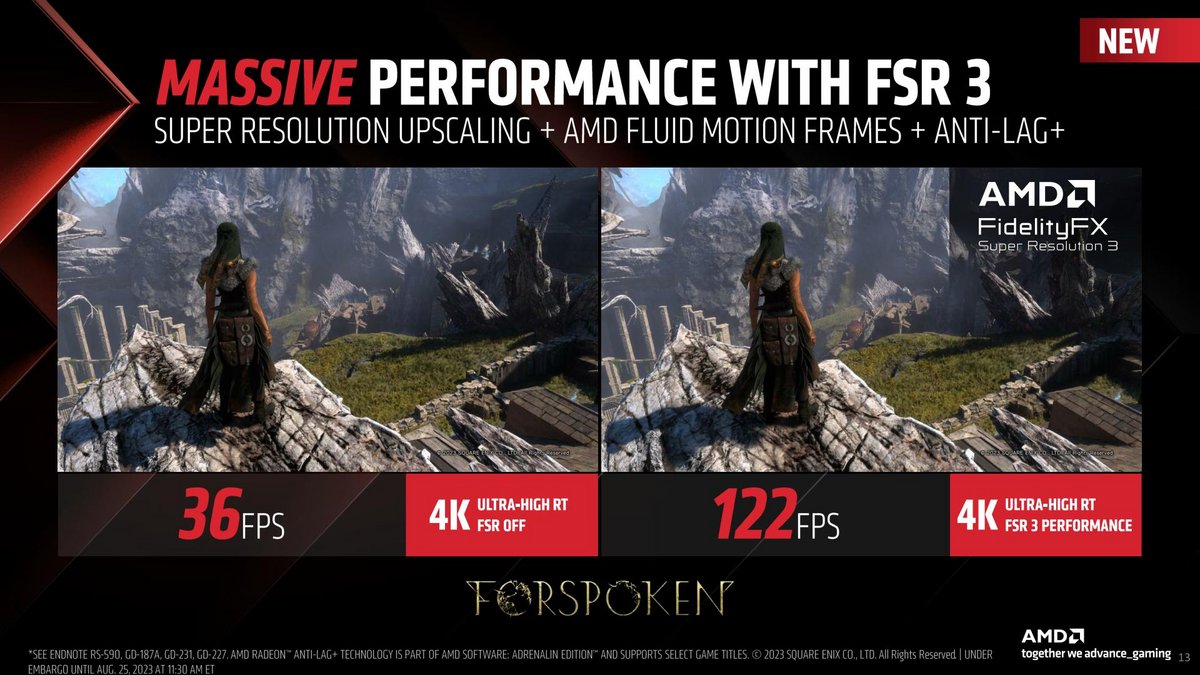
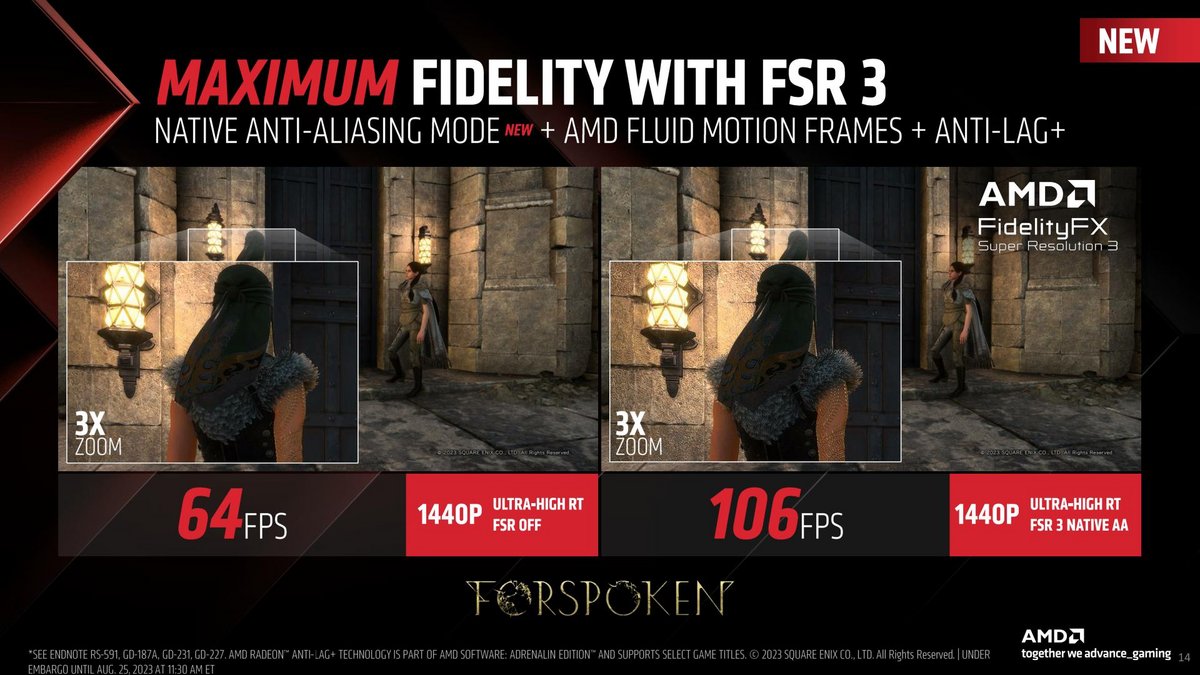
The AFMF isn’t the only addition of FSR 3.0. AMD also mentions user interface processing as an integral part of the algorithm, in order to prevent any artifacts in games.
The OpenGPU article dedicated to this version highlights several advantages for developers. In bulk, let’s mention FRS 3.0 code written entirely in HLSL (High-Level Shading Language) or even workloads executed in asynchronous mode so as not to affect the main rendering pipeline of the game. AMD also praises the ease of integration FSR 3 in an FSR 2 game. Finally, the company specifies that the FSR 3 will soon be integrated into the FidelityFX SDK.
Which graphics card to take advantage of the FSR 3?
For players in front of the screen, like previous versions, the FSR 3 allows you to choose between several settings. We find the classic Quality, Balanced, Performance modes and now a Native AA quality mode. As its name suggests, it applies anti-aliasing and enhances the sharpness on a native definition, so without performing an upscaling.
Regarding the supported hardware, in the same way as the Frame Generation of DLSS 3.0 makes this version more restrictive and reserved for GeForce RTX 40 Series, FSR 3.0 with AFMF is less inclusive than FSR 3 with simple upscaling.
Concretely, to take advantage of the full FSR 3, you need at least a Radeon RX 5700 or a GeForce RTX 20 Series. AMD even recommends an RX 6000 or a GeForce RTX 30.

The FSR 3 without Frame Generation is more accommodating with older GPUs. It is indeed supported from the Radeon RX 590 and the GeForce GTX 10 Series.

AMD doesn’t mention FSR 3 support on RDNA 2 and RDNA 3 iGPUs, but we assume it does.
What games support FSR 3?
As you know, both DLSS and FSR require prior integration from game developers. These are not universal technologies that you can activate on the fly on all existing titles.
Version 3.0 of the FSR will be inaugurated by two games, namely Forspoken And Immortal of Aveums. When ? ” Shortly “, is content to answer AMD. The company nevertheless communicates a list of partner studios and future games.
The studios in question are:
- Ascendant Studios
- Enduring Games
- Square-Enix
- Mass Entertainment
- Ubisoft
- CD Project Red
- Saber Interactive
- Focus Entertainment
- 11 bit studio
- Offworld Industries
- GameScience
- Pearl Abyss
- SEGA
- Ryu Ga Gotoku Studio
- Reflector (Bandai Namco)
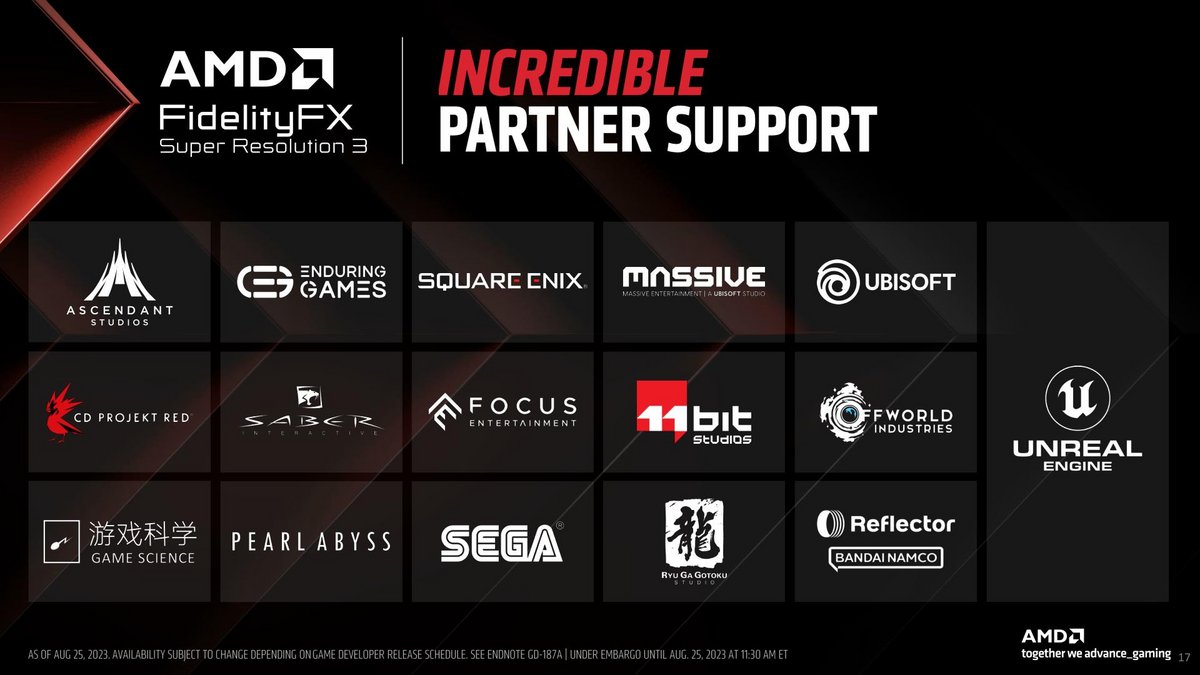
As for the games, here they are:
- Avatar: Frontiers of Pandora
- Cyberpunk 2077
- Warhammer 40K: Space Marine II
- Frostpunk 2
- squad
- Starship Troopers: Extermination
- Black Myth: WUKONG
- Crimson Desert
- Like A Dragon: Infinite Wealth
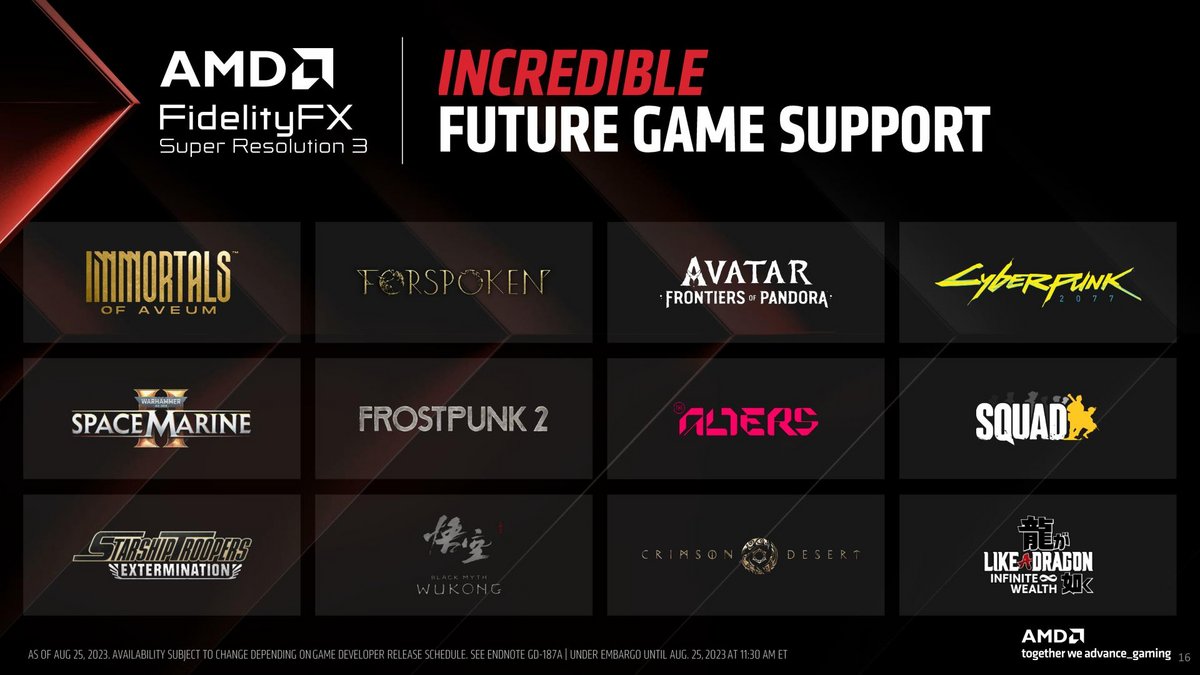
AMD HYPR-RX: an ersatz FSR in all games
AMD’s other main announcement relates to the HYPR-RX. It is a tool integrated into AMD Software: Adrenalin. It combines AMD Radeon Boost, Radeon Anti-Lag and Radeon Super Resolution.
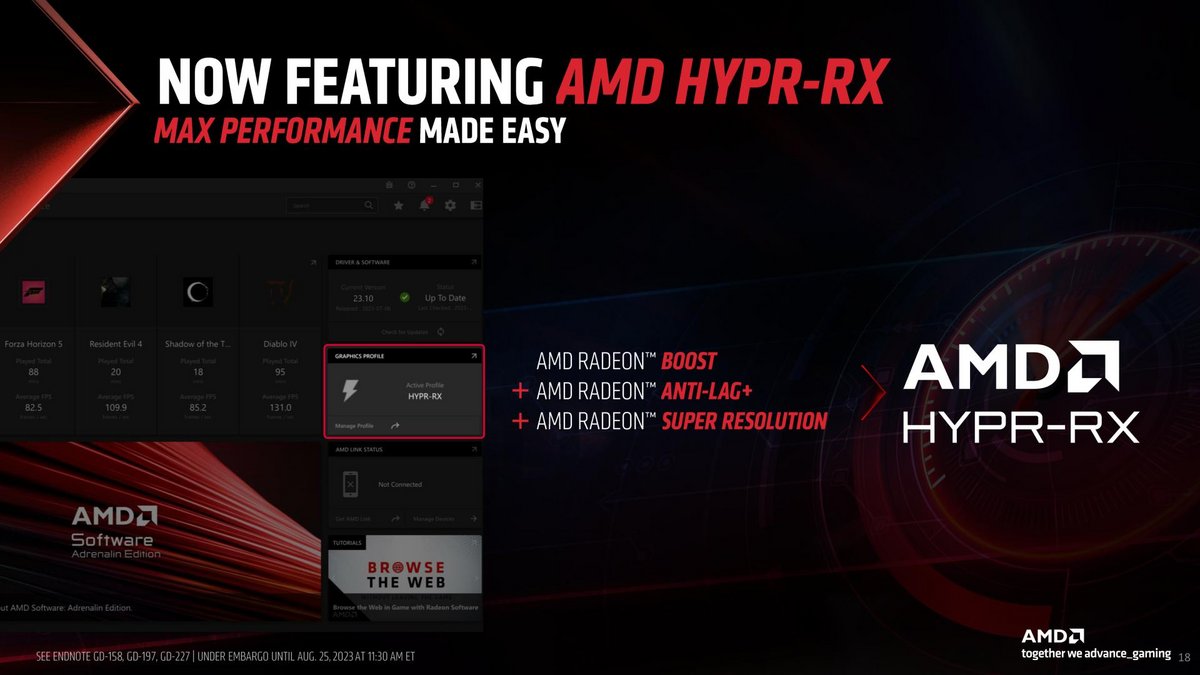
RSR offers lower image quality than FSR 3.0, but HYPR-RX has a big advantage over FSR: it can apply to all DirectX 11 and DirectX 12 games without prior integration, directly from the option present in the Adrenalin software. The other side of the coin, the HYPR-RX requires an RDNA 3 graphics card (Radeon RX 7000).
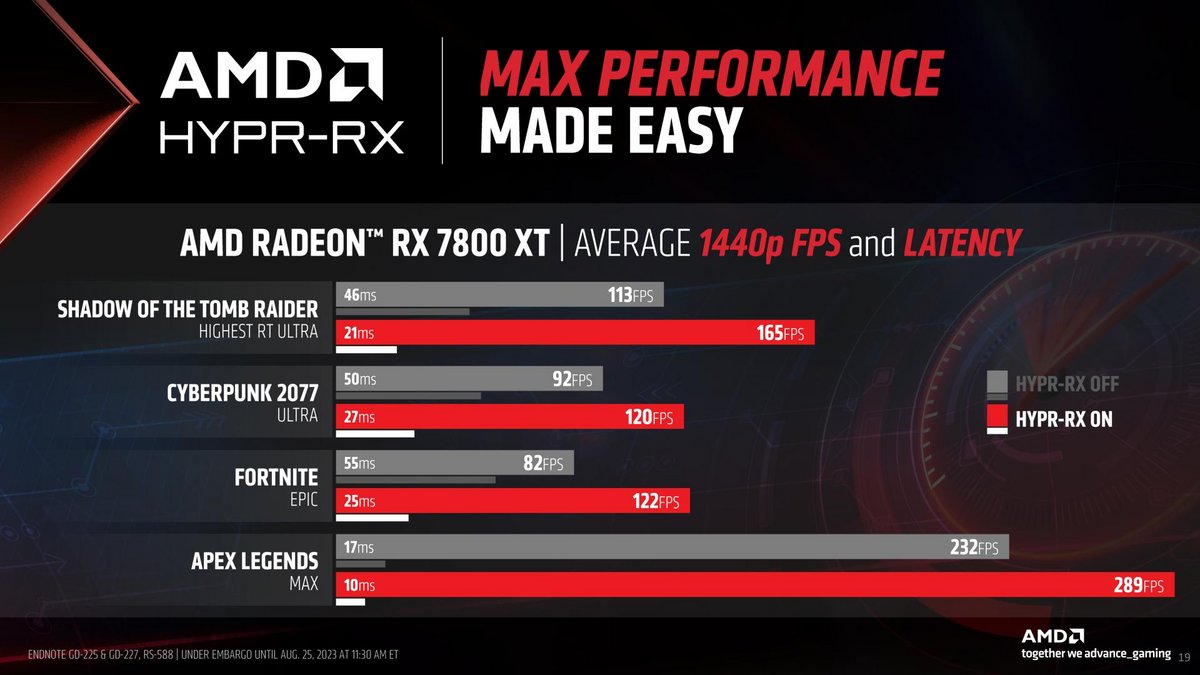
The HYPR-RX will be available from September 6th. However, AFMF support will only be added later, during the first quarter of 2024.
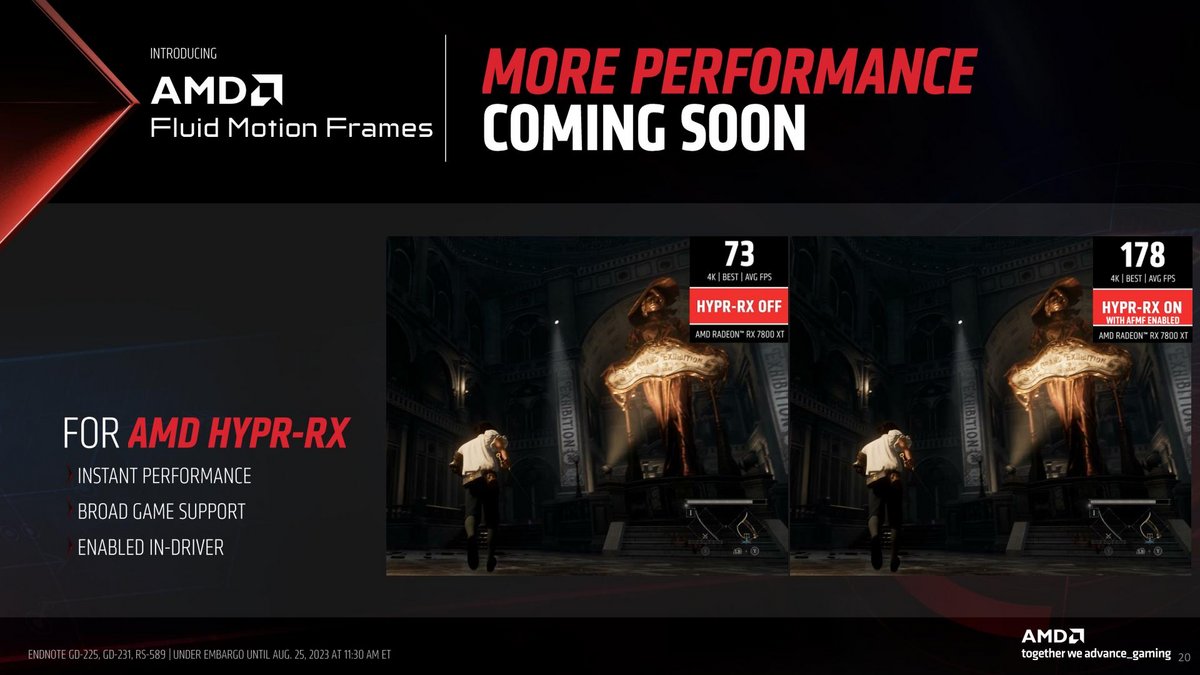
Sources: GPUOpen (AMD), AnandTech
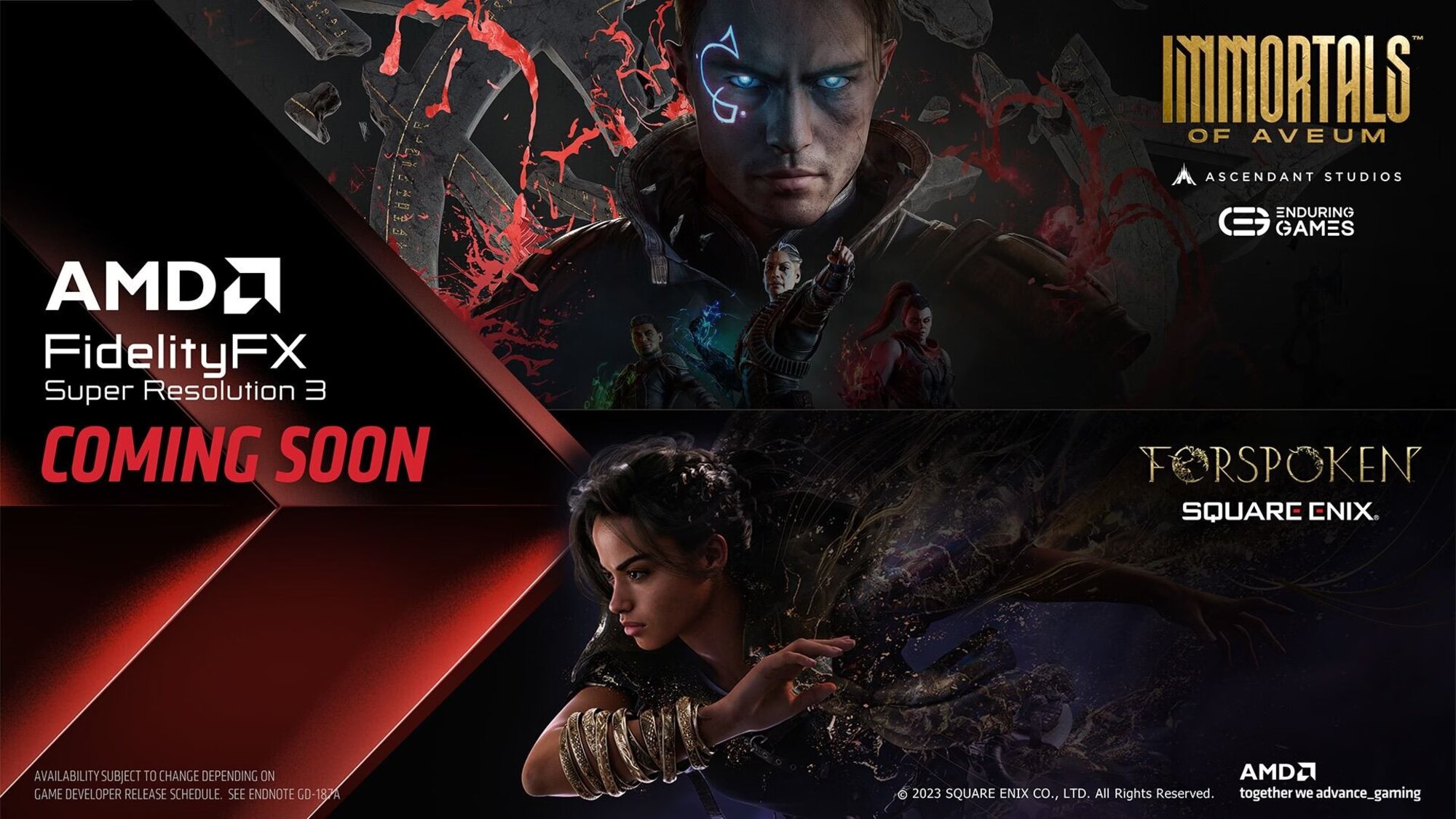
19